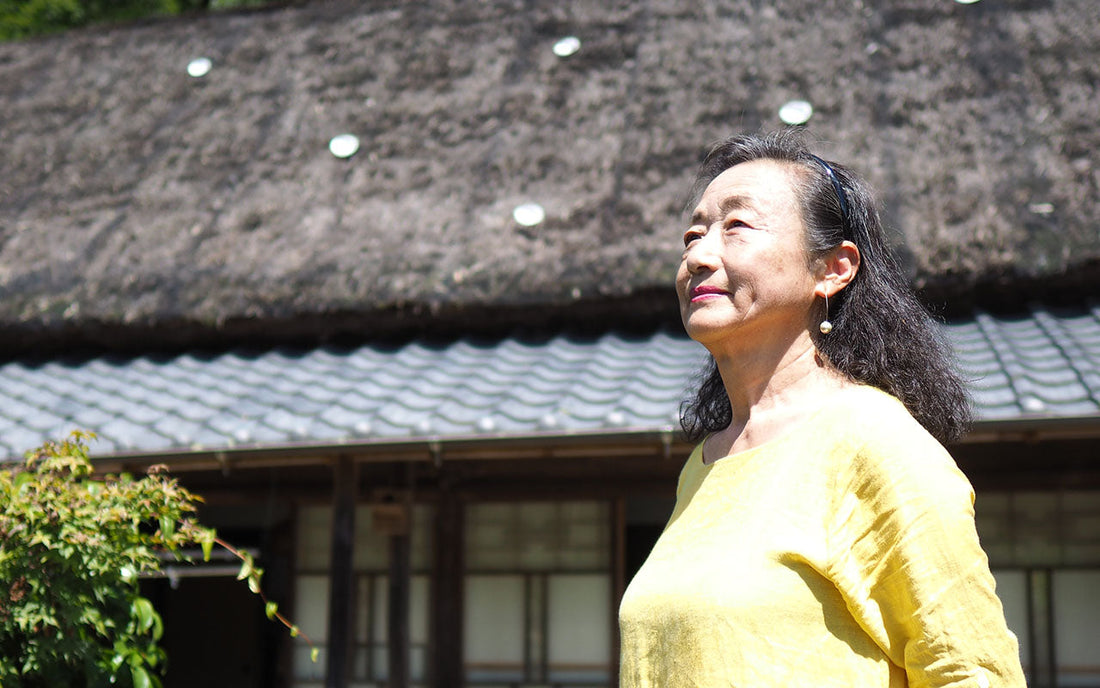
Interview with Reiko Sakai of Toriyagane Kiln
The passion and challenge of a pioneering female ceramic artist that continues for half a century
Profile/Ceramics history
(Sakai Reiko)
Born in Gifu City in 1946. After graduating from Naniwa Junior College in 1966, he received training in ceramics in Kyoto. After completing his training at the Gifu Prefectural Ceramics Testing Laboratory in 1969, he studied under Living National Treasure Kato Kozo. In 1975, he built a kiln in Sogi-cho, Toki City, Gifu Prefecture. He serves as a councilor for the Mino Ceramic Art Association, a public interest incorporated association.
(Awards and exhibition history as of 2025)
Received the Women's Ceramic Art Award in 1968. Selected for the Asahi Ceramic Art Exhibition in 1969. Held a solo exhibition at Gifu Takashimaya in 1992. Received the Tajimi City Government Press Club Award in 1993. Held a solo exhibition at Gifu Takashimaya and a four-person exhibition at Gamagori Prince Hotel in 1996. Exhibited at the "Kazujuku Exhibition" at JR Nagoya Takashimaya. Selected for the Tokai Traditional Crafts Exhibition. 2004 Exhibited at the "Kazujuku Exhibition" at JR Nagoya Takashimaya. 2005 Held a group exhibition at Gamagori Prince Hotel, a solo exhibition at Osaka Takashimaya, and exhibited at the "Kazujuku Exhibition" at JR Nagoya Takashimaya. 2006 Exhibited at the "Kazujuku Exhibition" at JR Nagoya Takashimaya. 2007 Held a two-person exhibition at JR Nagoya Takashimaya. 2010 Held a group exhibition at the Furukawa Tamesaburo Memorial Museum. Received the Silver Prize at the Shouroku Award Tea Ceramic Exhibition in 2012. Received the Takuo Award in 2016. In 2017, he held a solo exhibition at Gifu Takashimaya to commemorate his winning of the Takuo Award.

A workshop surrounded by beautiful nature
Reiko Sakai's workshop in Sogi-cho, Toki City, Gifu Prefecture, is about a 20-minute drive from the city center, where the city hall and large commercial facilities are located. After crossing a mountain and going through a forest, the village comes into view. As you proceed along a narrow road just wide enough for a car, you will come into view of an old thatched-roof house, unique in the village.

Thatched roofs are difficult to maintain due to the declining number of people who can maintain them.
Living in a traditional Japanese house
Sakai has set up his workshop in this old house, and we spoke to him on the terrace, which offers a great view of the surrounding area.
More than 50 years ago, when he saw this old house with a thatched roof, he thought it would be interesting to live in a thatched house, which is now difficult to build due to building regulations, and decided to buy it.
Since then, in addition to caring for their over 100-year-old home, they have also re-thatched the roof, alternating between the front and back, every 20 to 30 years. They also make sure to maintain the rough-cut stone walls and the bamboo grove on the mountain behind the house, and continue to live a life that does not waste the natural bounty of Hachiya persimmons, Akebia berries, bamboo shoots, Chinese chives, and butterbur. They are also particular about the fittings, searching for and replacing old timber, but maintaining this is very difficult. "We endure, but we also incorporate the good things about the house," they replied with a smile that made it hard to believe they were struggling.
Encounter with pottery and independence
When asked why she chose Sogi, Reiko said, "I wanted to build a home and a workspace with a kiln in the mountains so that I could become independent as a potter." She renovated a farm shed into a pottery studio using old materials, and built a shed equipped with electric and gas kilns. Although it is not a spacious studio, it is a quiet environment where she can concentrate on creating pottery.

A workshop located away from the main road, on a hill in the mountains, with a great view
Reiko first encountered pottery when she was a student majoring in craft design in Osaka. "I thought pottery might be a job I could continue for the rest of my life," she says. However, in Japan in the early 1960s, it must have been very unusual for a young woman to try to make pottery her own career.
However, as if to make her dream come true, Reiko won the grand prize at the 2nd Women's Ceramic Art Exhibition. She was just 22 years old and had just started working as a trainee at the Gifu Prefectural Ceramics Testing Laboratory (now the Gifu Prefectural Ceramic Research Institute ) in Tajimi City. At a time when it was difficult for women to succeed, she took her first step as a female ceramic artist.
Pursuing the ideal baked finish
Later, while continuing to make pottery in pursuit of the ideal fired product, he faced the problem of not being able to fire "atmospheric Shino" ware . Just then, a wood-fired kiln at the Toki City Mino Ware Traditional Industry Hall happened to be available, so he had the opportunity to use it.
Reiko recalls that when a Shino piece that had failed to fire in a gas kiln after more than 100 hours was successfully fired to the desired finish in just one wood-fired kiln, she felt that "there was no way I could compete." This experience led her to start firing Shino pieces using wood. She says she became particularly fascinated with Shino pieces fired in an anagama kiln using red pine wood as fuel and natural glazes. "Sometimes I get a finish that I didn't intend, or an atmosphere that I never expected," she says, and is fascinated by the way her Shino pieces can evoke different images and emotions in each viewer.

Electric and gas kilns set up in the shed
Reiko, who has been active as a potter for a long time, says, "I've been able to continue doing pottery because I love it." Even at a time when her parents told her she should get married and stay at home, she says, "I never thought about that." However, because the Mino ware region and industry were dominated by men at the time, she faced many difficulties and frustrations.
However, Reiko never gave up and continued to stick to her beliefs. "I wasn't particularly resilient, but I believed in my own thoughts and just walked my own path," she says.
Tradition and new challenges
Reiko says that she is currently not limited to traditional Mino ware such as Shino, Oribe, and Kiseto, but is instead "making a variety of pottery, including Nanban ware and Karatsu." The reason for this is her desire to create tableware that matches her cooking. Reiko, who loves cooking, makes "ordinary home-cooked meals" using seasonal ingredients from Sogi, but she has doubts about today's disposable eating habits.
He hopes that people will at least transfer the food to a dish before eating it, rather than directly from the plastic . He fears that if this is not done, the beauty of Japanese tableware will be lost, and says, "We, as artists, make pottery to provide a more fulfilling life."

She answered with a smile throughout the interview, which made me feel at ease.
When we spoke, Reiko had just finished a group exhibition that she had been participating in for over 30 years, and she seemed relieved. However, she is busy without a break, saying, "I have to finish the ordered pottery right away."
"I've always pushed through opposition in my life by forcing my way through everything," says Reiko with a wry smile, but she is determined to continue her activities in the future, saying, "I have to be proactive and take things in a fun direction myself."
It was very impressive to see him talk so vividly about events that happened decades ago as if they happened yesterday.
(August 2024, Interview: Chika Shimura)
information
Toriyagane kiln
3025 Sogicho, Toki City, Gifu Prefecture, 509-5402




